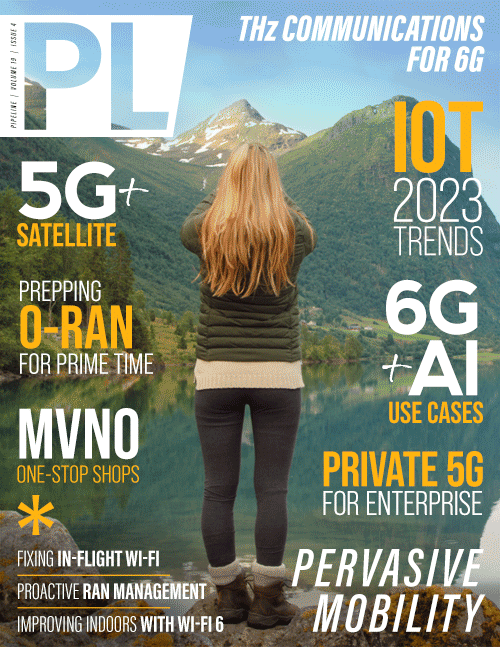Looking Ahead to IoT Trends for 2023
By: Ken Figueredo

Within the Internet of things (IoT) market in its broadest sense, the pendulum of attention veered toward the consumer sector over the course of 2022. The impetus of behind-the-scenes initiatives make this an obvious area to focus on in predicting 2023 market dynamics.
In addition to momentum effects, however, other developments will shape future market dynamics. These include market shocks, such as the global pandemic, that trigger and accelerate new developments. Fresh ideas from new entrants disrupt conventional thinking, leading to changes in user expectations, which represents another avenue to predict future trends.
In parsing the 2023 prospects for the IoT sector, it also makes sense to look beyond near-term triggers. The gradual impact of structural changes will resonate through the industry over a period of several years. That makes it imperative for industry participants to think in terms of a roadmap for IoT and to plan beyond 2023.
The swing to consumer IoT
On the commercial front, large vendors such as Apple, Amazon, Google, and IKEA are backing the Matter connectivity protocol, an initiative of the Connectivity Standard’s Alliance. Their collective aim is to revive interest in the connected home market. They recognize that growing numbers of consumers want to monitor their homes and possessions via apps and connected home-gateways.
Consumers’ initial focus on convenience and security will evolve and expand over time. Over the coming winter and spring months, price inflation and energy usage efficiency considerations will result in homeowners seeking better insights into their utility costs and consumption patterns.
Large vendors recognize that a highly fragmented market for smart devices depends on interoperability. In turn, this requires industry coordination and standardization. Expect to see smaller firms and niche hardware suppliers jumping on the Matter bandwagon to increase the range and choice of smart home devices available to builders, property managers, and homeowners. There will also be market-entry and competition for smart home services as providers explore ways to become the trusted provider for portfolios of smart home services.
Regulatory angle on consumer IoT
The private sector is not alone in taking action to develop the consumer IoT sector. Associations representing consumers and regulators are voicing the need to prepare for increasing numbers of consumer devices in the home. Notably, they are drawing attention to privacy, safety, and security concerns. This is because it is not unusual for consumer IoT devices to use weak passwords or to lack mechanisms to patch software flaws. Currently, too many connected devices contain security vulnerabilities that would open the door to hacking and malicious attacks. At present, consumers and hardware providers tolerate a market of inexpensive devices that perform a basic function. They also do not care overly much about security. This is problematic for the future as IoT increasingly seeps into the infrastructure that enables everyday living.
In 2023, two regulatory initiatives will drive industry change. One of these involves the US, where the government is taking action over cybersecurity concerns by introducing a labeling program for consumer IoT devices. The scheme bears similarities to the “Energy Star” rating system and aims to educate consumers about the risks associated with routers, smart speakers, connected door locks, and security cameras. Researchers at Carnegie Mellon University have already canvassed industry views on a smart devices security and privacy label to help consumers make informed purchasing choices and to encourage manufacturers to disclose their privacy and security practices.
The second initiative relates to the European Union (EU), where there are plans to enact the Cyber Resilience Act. The Act will require smart devices manufacturers to follow strict cybersecurity rules. Manufacturers would need to review their products’ risk profiles and fix any discovered vulnerabilities. They would need to notify the authorities within 24 hours if a problem or threat were uncovered. Failure to abide by the provisions could trigger fines as high as €15 million or 2.5 percent of global turnover and, potentially, a ban on sales.
The combination of commercial interests and regulations carrying material financial penalties will shape the consumer IoT market from 2023 onwards. The effects are likely to spill over from the smart home sector and into the wellness arena, for example, once consumers pay attention to the data and recommendations their wearables generate. As with payments and General Data Protection Regulation



















